We left the coast and Camapania this morning headed east for Matera. The drive took us almost immediately into the rugged Appennini mountains of Basilicata. Basilicata was well known for a long time for being really poor. (Carlo Levi’s book Christ Stopped at Eboli takes place here) We actually drove through Eboli on our way here however we did not stop.
By far this has been one of the most dramatic and stunning drives of the trip. There is little industry and it kind of looks like how the Alps must look in the Summer, very green and tons of flowers and steep rock outcroppings . There is still a little snow on the highest peaks.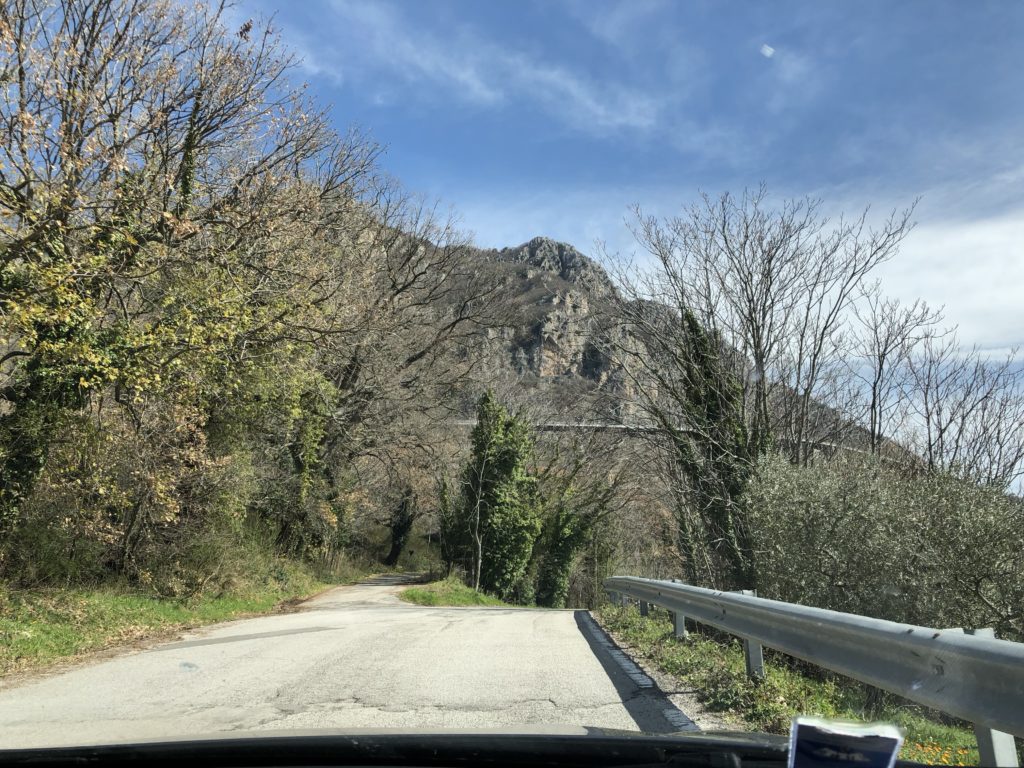
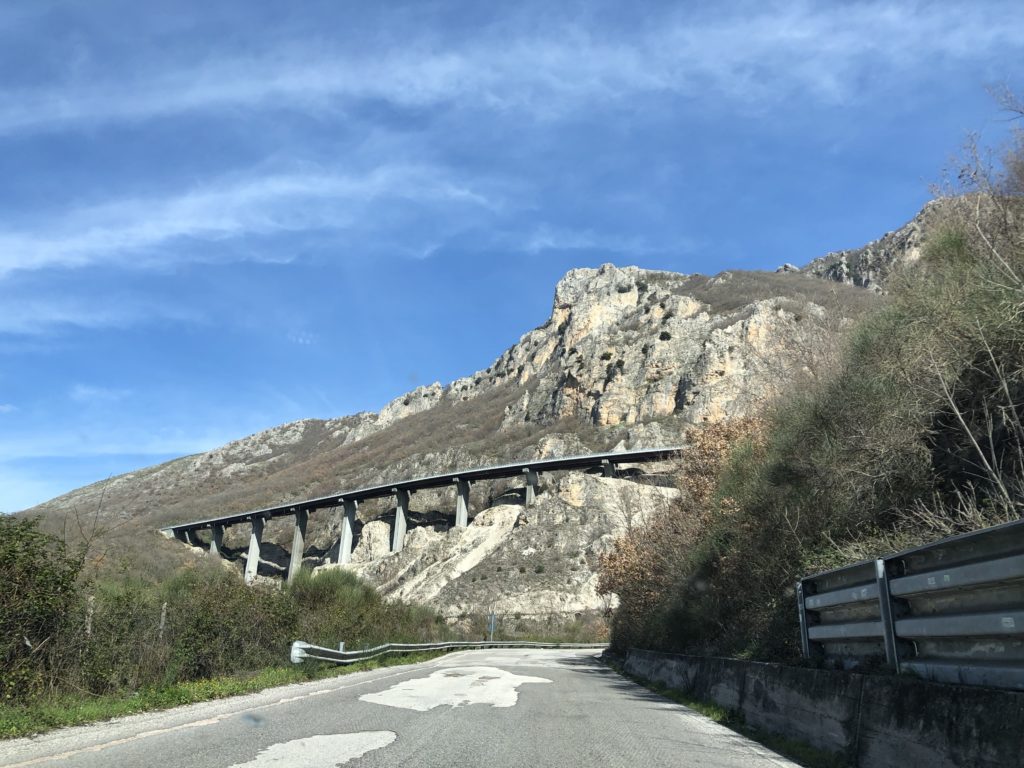
We broke up the trip with a stop at Castelemezzano, a small town about 20 minutes off the main road up a ton of switchbacks and a few log tunnels. The town is stuck to the side of the mountain just below a couple of large outcroppings. We walked around a bit, it seemed much more lively than some of the other small hill towns we’ve stopped in.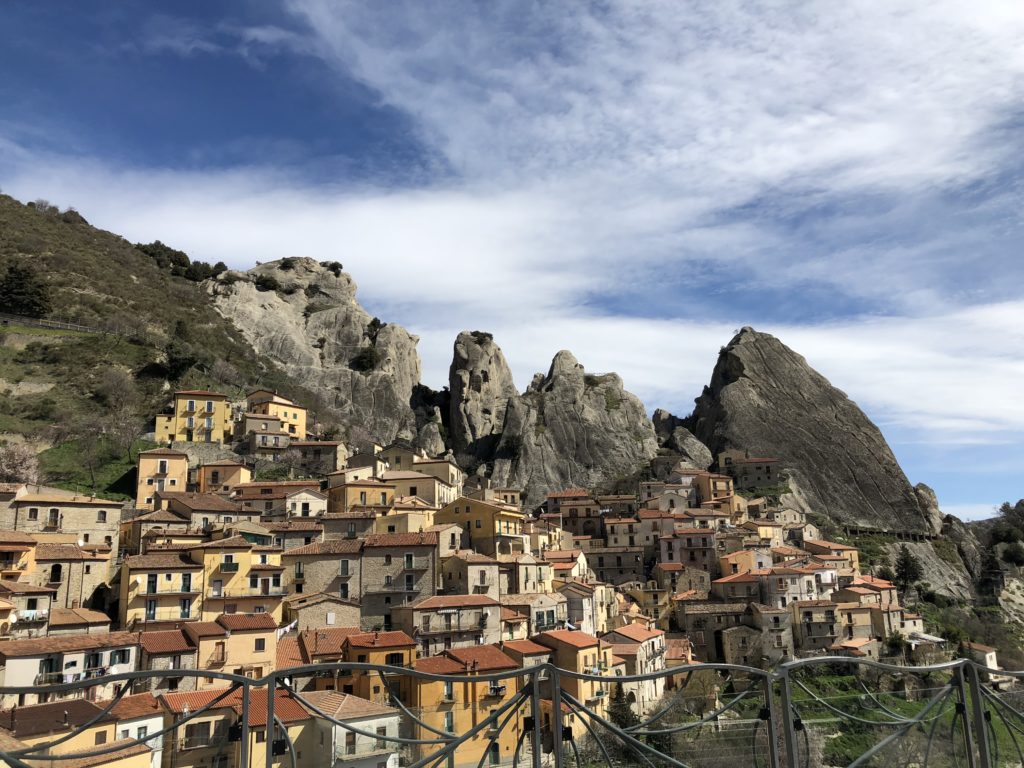
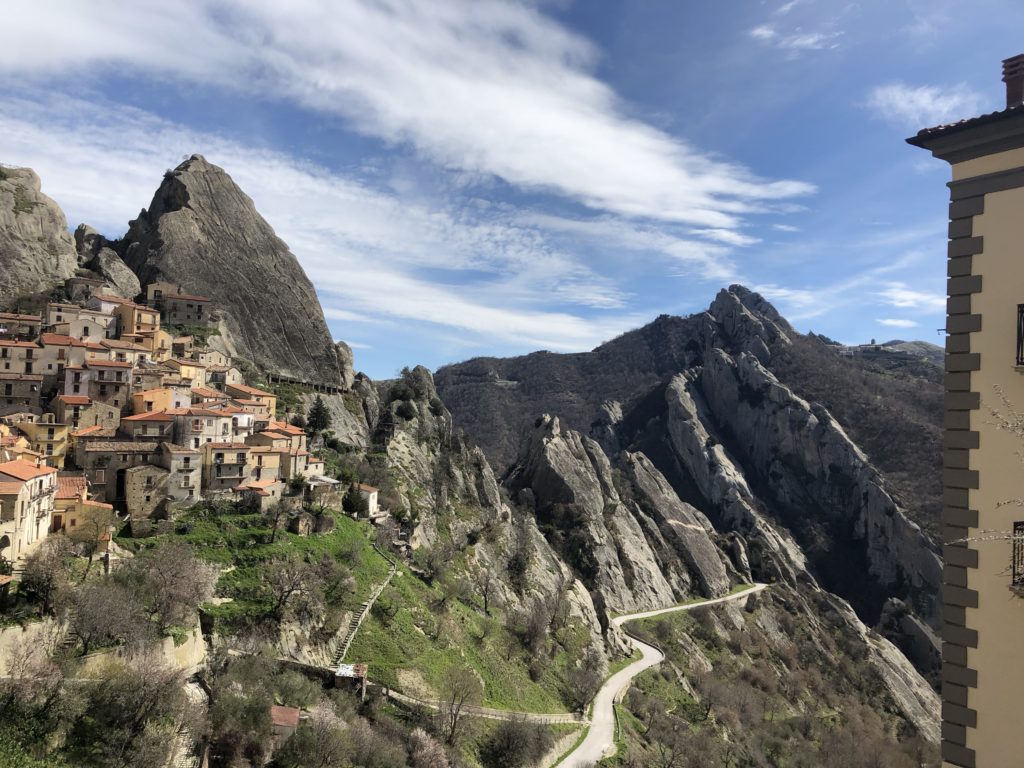 The second half of the drive reminded us of Colarado with gentle, scrubby hills. It’s all very green right now but in the Summer it must look like scorched earth, no trees anywhere.
The second half of the drive reminded us of Colarado with gentle, scrubby hills. It’s all very green right now but in the Summer it must look like scorched earth, no trees anywhere.
You can see Matera from a long way away, it’s good size and sits on top of a hill above a steep ravine. Matera is one of the oldest continuously inhabited cities in the world, dating back to the prehistoric times. The old part of the city called the Sassi where we are staying were once the embarrassment of Italy (even as late as the 50s people lived in the ancient caves with their animals and rampant malaria). Now it’s a UNESCO world heritage site and the 2019 European of culture. It is also breathtaking in a beautiful but sort of melancholy way, like a place that suffered a lot.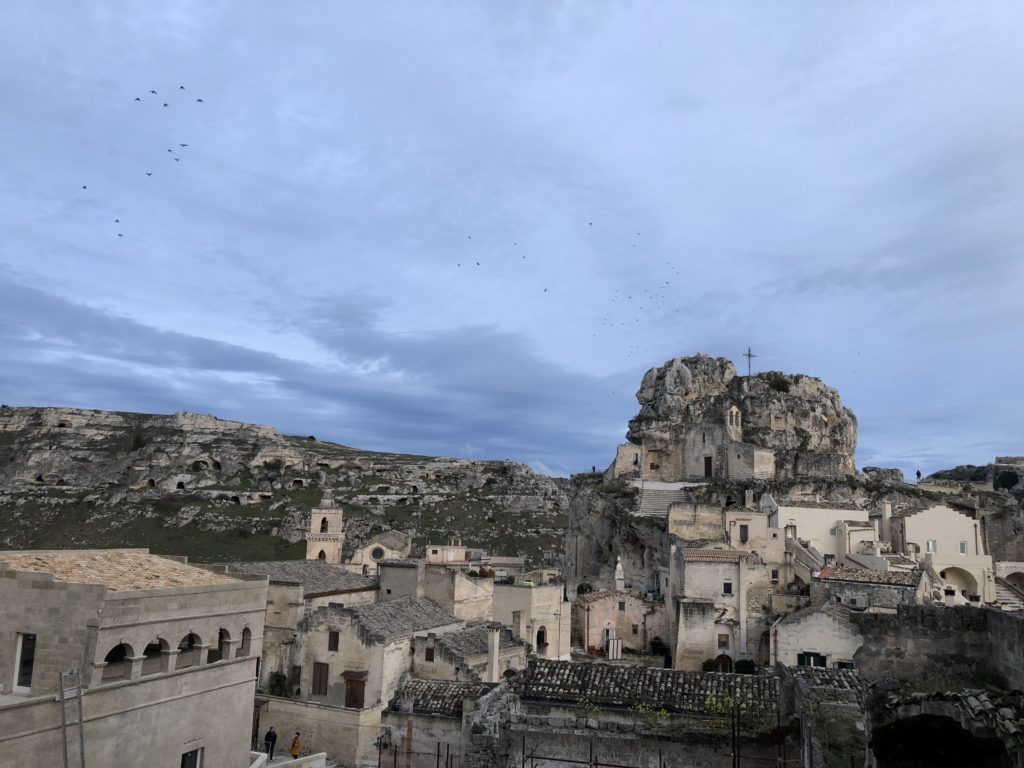
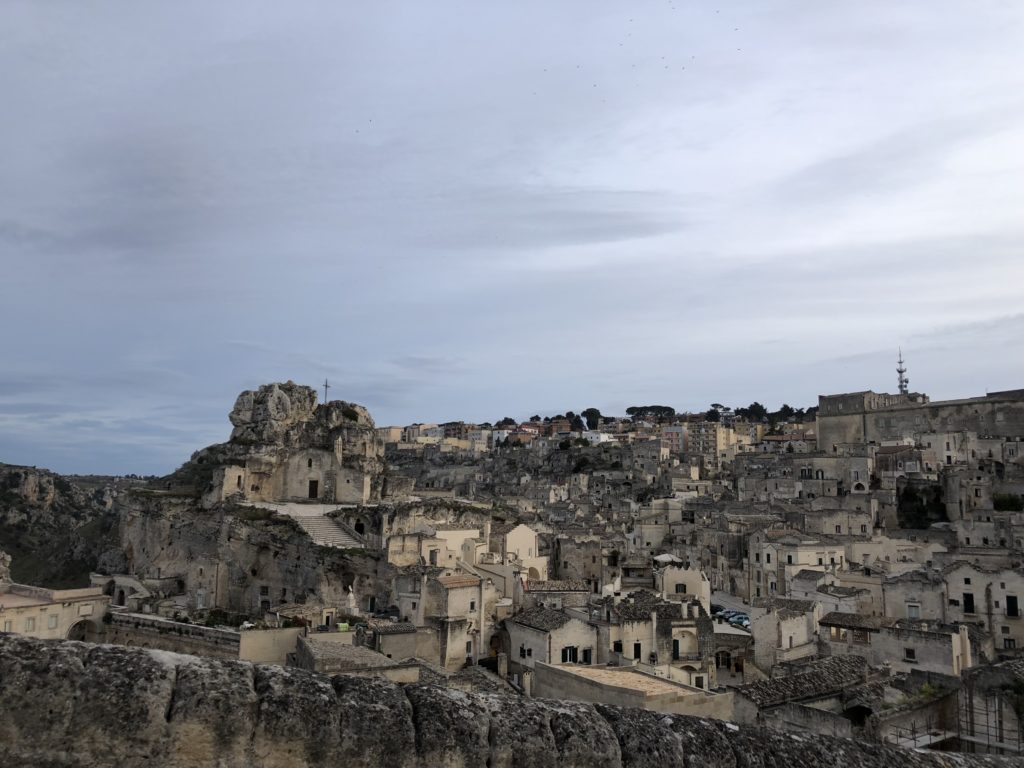
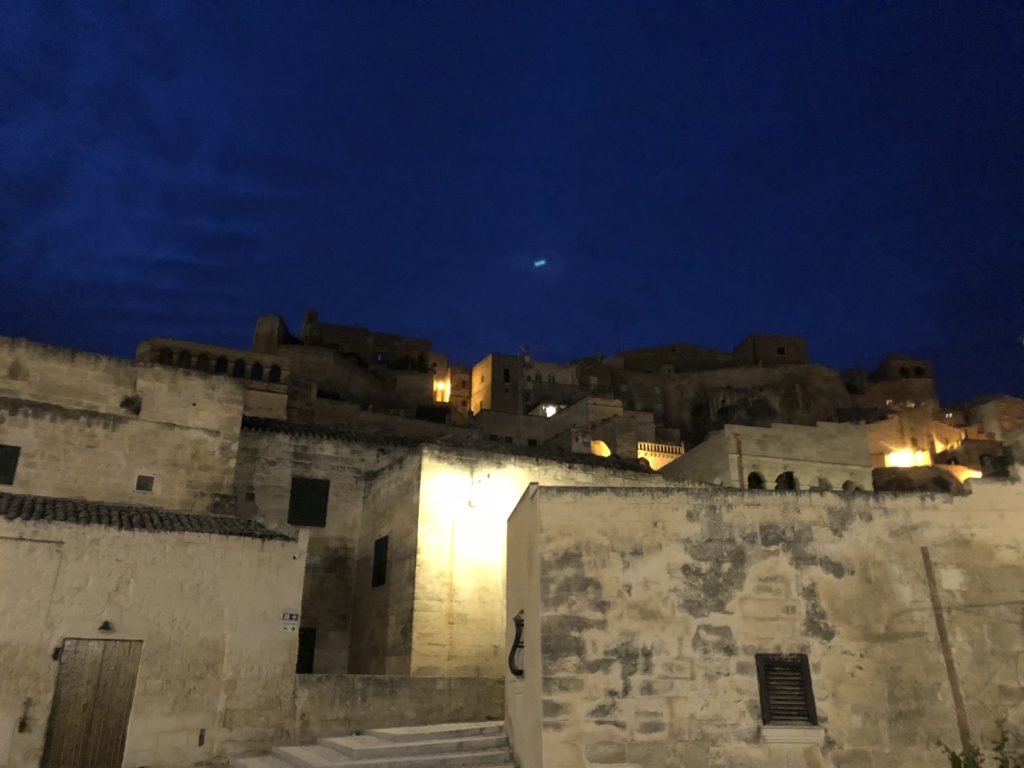
We got into town around 2 and had a late lunch of orecchiette which were delicious. We’ll be touring around tomorrow, exploring the labyrinth of streets in the Sassi area and also hopefully the Neolithic caves remains outside of town. Sara is very excited that there are Byzantine art examples in some of the churches here as that is one of her favorite periods of art.
